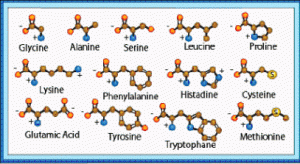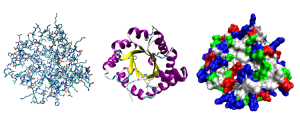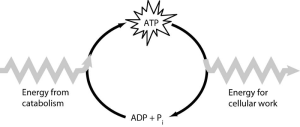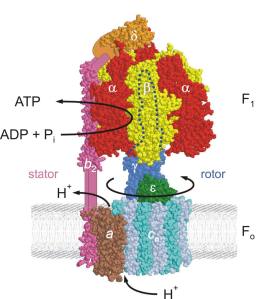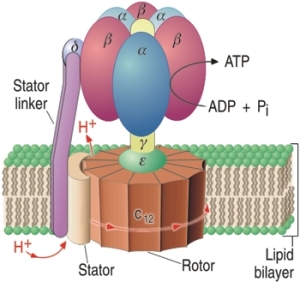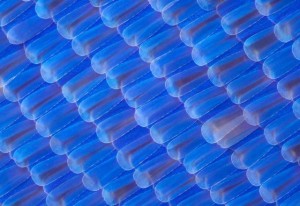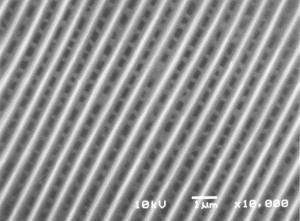The origin of life is one of the huge questions that scientists must wrestle with. If the course of nature is an unguided, random process, then life must have arisen spontaneously from non-life without the agency of an intelligence.
So what explanation does science give for the origin of life? Our discussion must begin with the Miller-Urey Experiments.
In 1953, scientists Stanley Miller and Harold Urey filled a flask with methane, ammonia, hydrogen, and water. Miller ran an electric current through a closed system containing these gases. The electric current represented lightning, which may have been quite common on earth’s surface long ago.
The results? Several different amino acids were found in the products. This is significant because a variety of amino acids are absolutely essential for life. They are necessary for the formation of proteins, which along with DNA and RNA, are present in all life forms.
So, we could present the findings this way: “scientists have proven that the essential building blocks of life can be created through natural means.”
Not so fast. As it turns out, Miller filled his flask with a very unrealistic mixture of gases. Analysis of ancient rocks indicates that earth’s atmosphere never had anywhere near Miller’s levels of hydrogen or hydrogen-rich gases such as methane. What if we used a realistic mixture of mostly carbon dioxide and nitrogen gases similar to earth’s actual early atmosphere? This article in Discover Magazine puts it lightly: “you’d have a hard time finding amino acids in the resulting brew.”
Also, there may have initially been a lot of lightning on earth’s surface, but nothing like the constant supply of electricity that Miller subjected his concoction to.
So it is conceivable that some amino acids resulted from the composition and state of earth’s early atmosphere. But how close are amino acids to life? Actually, amino acids are rather unexciting and simple compared to life. We have already discovered about 90 of them in existence, of which 19 are found on earth. The rest are out there in space. So… apparently the presence of amino acids alone doesn’t do much to get a life cycle started.
Here is an illustration that depicts some of these acids.
The article linked above cites scientists admitting that “amino acids are old hat and are a million miles from life.”
That’s because amino acids are like tiny little building blocks that must be put together in complex and elegant ways to make the essential elements of life known as proteins. They also can’t give us DNA or RNA, which are also absolutely essential for life. We would need nucleic acids for that which are even harder to come by.
But let’s humor the supporters of abiogenesis (spontaneous life from non-life) for a minute. Let’s say that despite incredible odds and by means mysterious to us, we could get all of the amino acids and nucleic acids that we needed.
Then we would have a pile of acids sitting around doing nothing.
That’s because amino acids don’t spontaneously bond to each other and build themselves into proteins. This is what a protein looks life, conceptualized in three different ways for your convenience.
In order to build proteins out of amino acids, you need the environment present inside a cell, complete with some very specific information encoded in RNA, and ribosomes. A ribosome is a “large and complex molecular machine” made of two subunits that look like this:
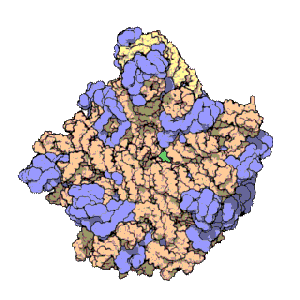
Bur ribosomes themselves are built from proteins and RNA. This creates a “chicken or the egg” scenario in which ribosomes are needed to create proteins but proteins are needed to build ribosomes.
Furthermore, the instructions necessary for the creation of proteins by ribosomes are in RNA. But nucleic acids don’t spontaneously build into DNA and RNA. And if they did, they would be doing so randomly, not in a way that encoded them with the complex and beautiful information necessary to direct the life processes of a cell.
So lets review. It is conceivable that amino acids could have resulted from the conditions in our early atmosphere. One way to present that statement is this: “we can get the essential building blocks of life from nature without God.”
But what about explaining the creation of enough amino acids and nucleic acids of various kinds, and then explaining their formation into proteins, and the formation of those proteins into ribosomes, and the very presence of the specific information present in DNA and RNA? And how did all of these pieces build themselves into a cell with a cell wall, a cytoplasm, and at least one chromosome, among other things? After all, the instructions in DNA teach a cell how to grow and reproduce as a closed-system, not how to build itself from a bunch of pieces that are laying around like a man picking himself up by his own bootstraps.
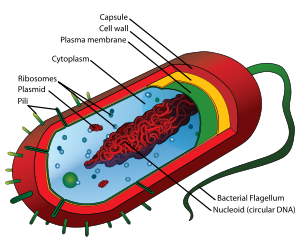
Even when scientists take a simple, self-contained cell with all of these pieces already in it, and pop it, they cannot coax it to come alive again. Though all of the pieces are there in forms full of the complexity and information that they cannot explain, they still cannot convince the pieces to spontaneously begin cooperating with each other in the form of a cell. And remember that all life is built from cells.
When science claims to understand how the “essential building blocks of life” could have arisen without God, don’t be ignorant about the very limited scope and implications of that claim.
Additional sources:
http://people.chem.duke.edu/~jds/cruise_chem/Exobiology/miller.html

